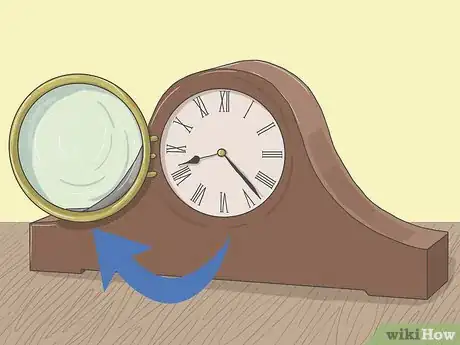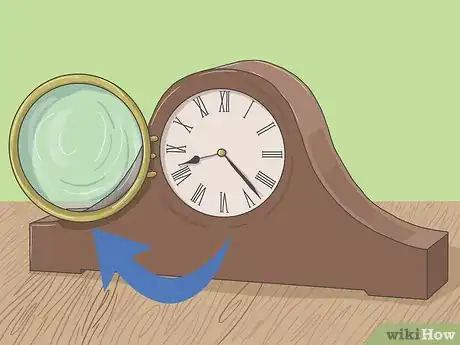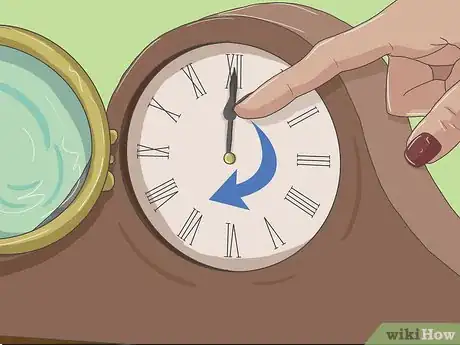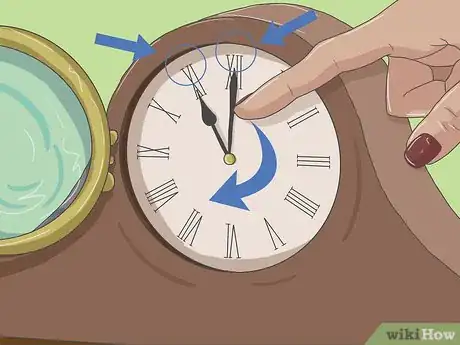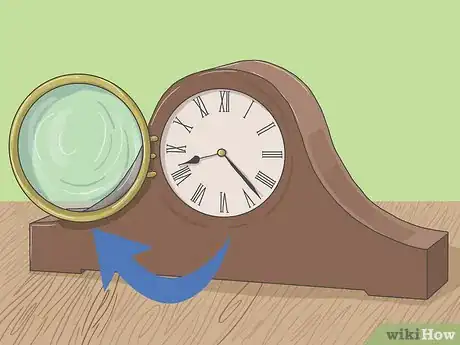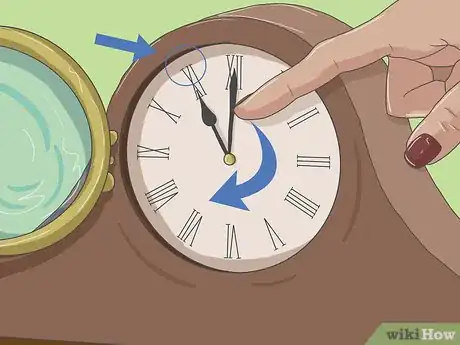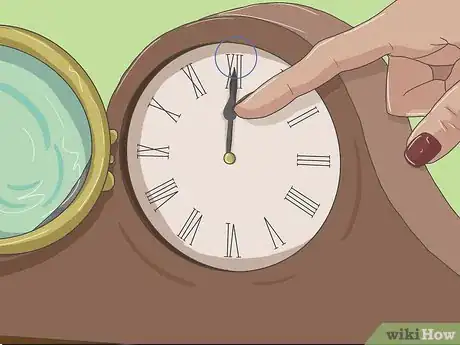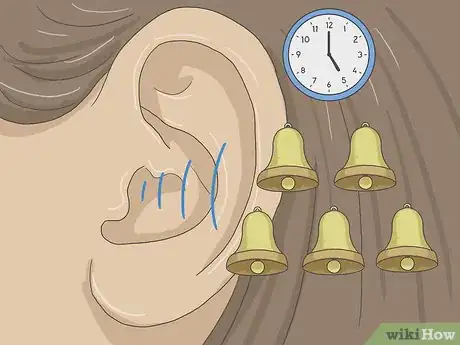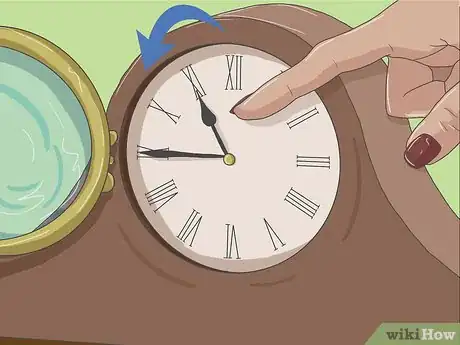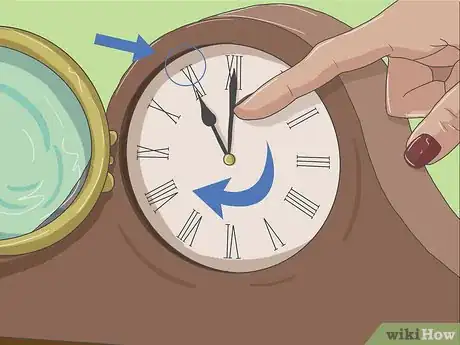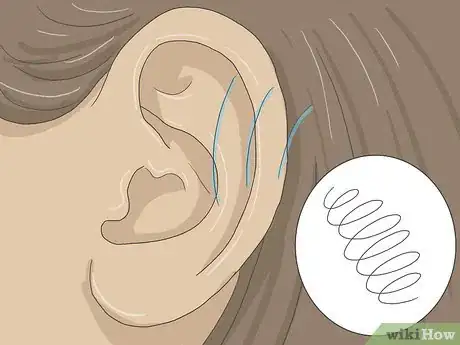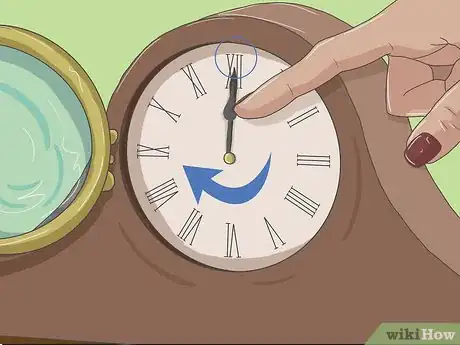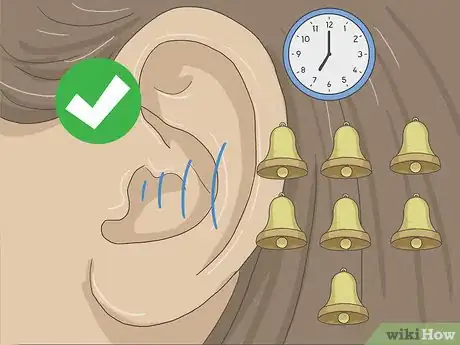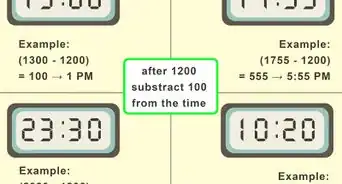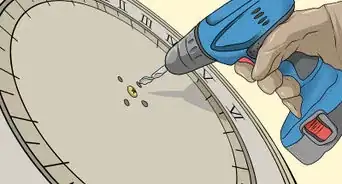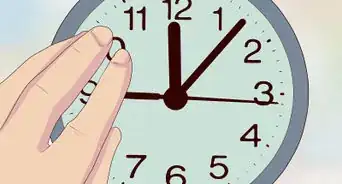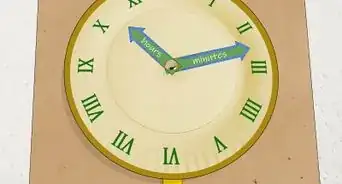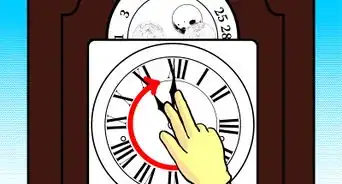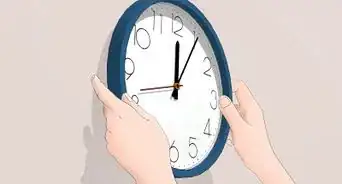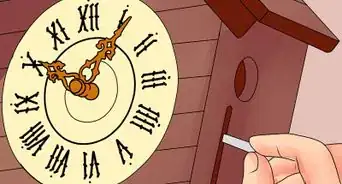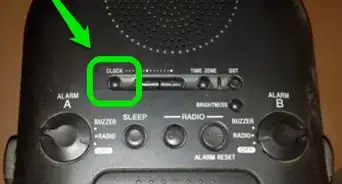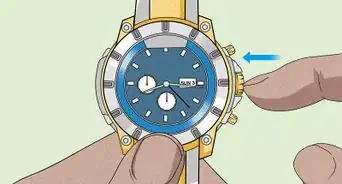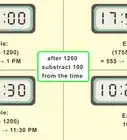wikiHow is a “wiki,” similar to Wikipedia, which means that many of our articles are co-written by multiple authors. To create this article, 23 people, some anonymous, worked to edit and improve it over time.
This article has been viewed 239,715 times.
Learn more...
Mantel clocks were popular in the 18th, 19th and early 20th centuries and many people have inherited these old chimers or purchased them from antique dealers.[1] If you are one of those people, you need to know how to set their time or how to re-sync their chimes to match the hour should those two become out-of-sync as they sometimes do. An out-of-sync clock strikes a different number of times than the hour the little hand shows. These instructions apply only to old striking mantel clocks such as the one in the photos below. Newer chiming clocks may have different ways of synchronizing and setting.
Steps
Winding the Clock
Setting the Time
-
1Open the hinged glass cover of the clock’s face to access the clock’s hands.
-
2Set the time by moving the big hand forward, pausing at the 11 o’clock position.
-
3Listen for the subtle sound of a spring unwinding before moving further.
-
4Move the big hand to the 12 o’clock position.[4]
-
5Pause and listen for the clock to strike the number of times indicated by the little hand.[5] If the little hand is on 5 o’clock, it should chime 5 times.
-
6Advance clockwise to the correct time. Make sure you repeat the pauses at the 11 o’clock and 12 o’clock positions as needed until the clock’s face shows the correct time.[6]
Re-synchronizing the Chimes to the Hour
-
1Open the hinged glass cover of the clock’s face to access the clock’s hands.
-
2Move the big hand clockwise to the 11 o’clock position and pause.
-
3Listen for a sound like a spring unwinding. This sound is subtle.
-
4Advance the big hand to the 12 o’clock position and stop.
-
5Count the number of strikes. An out-of-sync clock strikes a different number of times than the hour the little hand shows.
-
6Move the big hand back counterclockwise to the number 9 and pause.[7] You should hear another sound like a spring unwinding. This sound too is subtle. The clock now registers 15 minutes before the hour.
-
7Move the big hand forward again to the 11 o’clock position and pause.[8]
-
8Listen again for the sound like a spring unwinding. Remember, this sound is subtle.
-
9Advance the big hand to the 12 o’clock position and stop.
-
10Listen and count the number of chimes.
-
11Repeat the action until the number of chimes and the hour are synchronized.
Community Q&A
-
QuestionWhat if there are two keyholes for winding?
 Community AnswerOn two keyhole clocks, one is for winding the timekeeping/chime mainspring, and the other is for winding the strike/chime spring. Do not force; just wind both to firm resistance, then reset the clock through the "chime" sequence until it catches up to the correct hour/strike number.
Community AnswerOn two keyhole clocks, one is for winding the timekeeping/chime mainspring, and the other is for winding the strike/chime spring. Do not force; just wind both to firm resistance, then reset the clock through the "chime" sequence until it catches up to the correct hour/strike number. -
QuestionI have a Black Forest mantel clock. What is the proper sequence for winding, and how do I prevent it from chiming at night?
 Community AnswerBlack Forest mantel clocks need to be wound backward. To stop chiming at night, pull off the minute hand and flip the switch.
Community AnswerBlack Forest mantel clocks need to be wound backward. To stop chiming at night, pull off the minute hand and flip the switch. -
QuestionWhy might my pendulum clock chime out of sync?
 Community AnswerBecause the arms are not properly aligned with the internal mechanism. Try rotating the arm to the chiming. For example, if the clock chimes at 1 o'clock but the time reads 1:43, move the minute hand to where it reads 1 o'clock.
Community AnswerBecause the arms are not properly aligned with the internal mechanism. Try rotating the arm to the chiming. For example, if the clock chimes at 1 o'clock but the time reads 1:43, move the minute hand to where it reads 1 o'clock.
Warnings
- You may, however, push the big hand counterclockwise for a few minutes to reset the time as long as you never do this action between the 11 o’clock to 12 o’clock positions (except when performing a re-synchronization as outlined above). If you move the hands counterclockwise between the 11:00 and 12:00 positions and you are not trying to re-synchronize, as instructed above, the chimes and the time will become out-of-sync.⧼thumbs_response⧽
- Never move the hands counterclockwise past the 11 o’clock or 12 o’clock positions from any position to the right of the 12:00 position. For instance, do not push the hand from the 1:00 position through the 12:00 position to the 10:00 position or even the 11:59 position. This action will desynchronize the clock and the chimes.
- Additionally, never advance the hands too quickly when re-synchronizing because the clock must be allowed to strike the full number of chimes of each hour.
- If you do either of these, the number of chimes and the hour will become unsynchronized.
⧼thumbs_response⧽
References
- ↑ https://www.youtube.com/watch?v=q5aZFJsTcKs
- ↑ https://ticktocktony.com/Clock-Repair-How-To-Articles/how-to-wind-a-clock.html
- ↑ https://ticktocktony.com/Clock-Repair-How-To-Articles/how-to-wind-a-clock.html
- ↑ https://www.youtube.com/watch?v=GV1B8BanxAU
- ↑ https://www.youtube.com/watch?v=GV1B8BanxAU
- ↑ https://www.youtube.com/watch?v=q5aZFJsTcKs
- ↑ http://www.valuableclocks.com/antique-clocks-care.htm
- ↑ http://www.valuableclocks.com/antique-clocks-care.htm
About This Article
Resetting the time on your antique mantel clock can be a little confusing, but it should only take you a few minutes. If you haven’t wound your clock yet, open the glass cover, insert your key, and wind it counterclockwise until it becomes hard to turn. Then, move the big hand forward until 11 o’clock and listen for the subtle sound of a spring. Move the big hand to 12 and wait for the clock to finish chiming. Now you can set the correct time by moving the big hand. If your chimes were out of sync, move the big hand back to 9 and wait for the sound of the spring. Then, move the hand forward to 11, listen for the spring again, and move the hand to 12. Keep moving the big hand back to 9, then forward to 11 and 12 until your chimes are in sync with the numbers. For more tips, including how to avoid desynchronizing your mental clock, read on!
